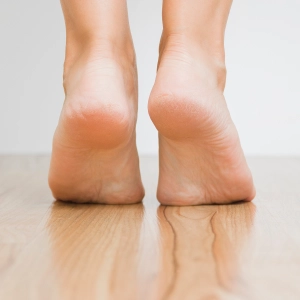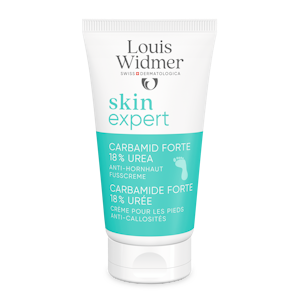Hyperkeratosis
Pääsivu:Ihoaiheet
article.category:Skin Diseases
Hyperkeratosis is increased keratinisation of the horny layer of the skin. The uppermost layer of the skin becomes thickened in areas or only at specific points. The well-known pads on the soles of the feet are a typical example of hyperkeratosis that is caused by mechanical stress.

Some infectious diseases can also cause hyperkeratosis. In addition, hyperkeratosis can occur in association with certain diseases, e.g. ichthyosis.
Cause
Ichthyosis (from Greek ichthys - fish) is actually a collective term for different forms of keratinisation disorders of the skin that are almost always hereditary. The most common form of inherited ichthyosis is ichthyosis vulgaris. This manifests in diffuse hyperkeratoses and the formation of dry scales. It affects men and women in equal measure and can be mild in some cases without causing any discomfort. The second-most common form is ichthyosis-X, which almost exclusively occurs in men. In both forms of the disease, skin changes can occur from birth onwards or develop over the course of life.
The most important characteristic of ichthyosis are scale-like hyperkeratoses, with insufficient scaling of the skin, that cover large areas. Mild cases simply produce dry, possibly slightly scaly skin, which is particularly pronounced in winter. There is also occasional itchiness.
In severe cases, the skin can look like flour dust or reptilian skin and perspiration and heat regulation are often also impaired. Ichthyosis is not transmissible.
Options for treatment
From a therapeutic perspective, careful treatment of the dry skin, that has a tendency to form scales, with lipid-replenishing products is important. Ointments, skin cream or lotions that contain urea as the active substance are important options for the treatment of many types of ichthyosis. Systemic (internal) therapies are also used to treat very severe cases.


